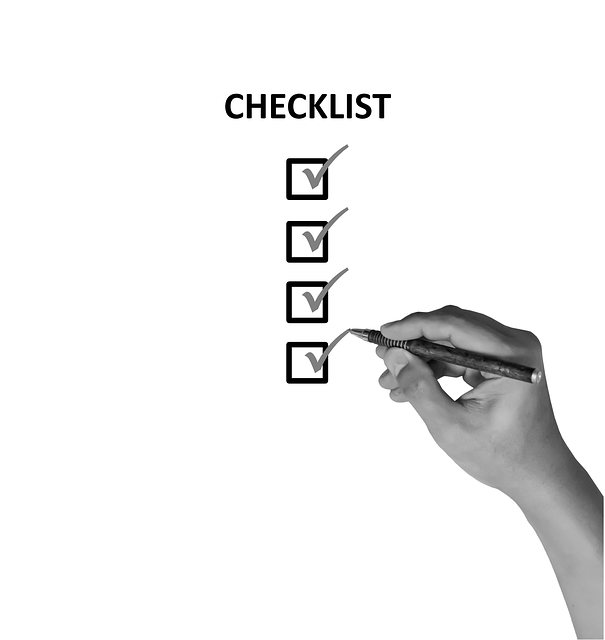The 5S training framework, a lean management philosophy from Japan, revolutionizes workplace organization and efficiency globally. Consisting of Sort, Set in Order, Shine (Clean), Standardize, and Sustain, it creates orderly, safe, and productive work environments. Benefits include improved safety, reduced waste, and enhanced employee morale, as evidenced by significant productivity increases and injury decreases in adopting facilities. Successful integration requires leadership commitment, staff involvement, regular audits, and continuous improvement through data-driven metrics like reduced search times and improved safety records. 5S training naturally drives efficiency, quality, and employee satisfaction within lean management frameworks.
Structured housekeeping practices are essential for any organization aiming to optimize productivity and efficiency. In today’s fast-paced business environment, maintaining a lean, organized workplace is no longer an option but a competitive advantage. The current challenge lies in implementing sustainable solutions that go beyond ad-hoc cleaning. This article delves into the transformative power of 5S training, a cornerstone of lean management, to revolutionize workplace organization. By standardizing processes and fostering continuous improvement, 5S empowers employees to maintain a meticulously organized environment, enhancing productivity and overall operational excellence.
- Understanding Structured Housekeeping: The 5S Framework
- Implementing 5S Training for Efficient Workplace Organization
- Lean Management Techniques: Streamlining Daily Tasks
- Continuous Improvement with Standardized Processes
- Measuring Success: Evaluating 5S Continuous Improvement
Understanding Structured Housekeeping: The 5S Framework

Structured housekeeping practices, such as the 5S framework, are transforming workplace organization and efficiency globally. This lean management philosophy, originally developed in Japan, emphasizes process standardization and continuous improvement. The 5S methodology—Sort, Set in Order, Shine (Clean), Standardize, and Sustain—serves as a powerful tool for creating orderly, safe, and productive work environments. By implementing 5S training, organizations can achieve remarkable results, including improved safety, reduced waste, and increased employee morale.
For instance, a manufacturing facility adopting 5S principles reported a significant drop in accidental injuries within the first six months, alongside a 20% increase in production efficiency. This success is attributed to the clear workflow visualizations and standardized procedures enabled by 5S. Each step of every process becomes explicit, making it easier for new employees to onboard and for teams to collaborate effectively. The data underscores the effectiveness of this structured housekeeping approach in enhancing workplace performance and safety culture.
Integrating 5S into a facility’s culture requires commitment from leadership and active participation from all staff. Continuous improvement is at the core of 5S, fostering an environment where regular audits and ongoing refinement are expected. Organizations should prioritize 5S training for managers and employees alike, ensuring everyone understands their roles in maintaining and improving workplace organization. Regular reviews, coupled with clear goals and metrics, can drive sustained progress, making 5S a game-changer for lean management and workplace optimization.
Implementing 5S Training for Efficient Workplace Organization

Structured housekeeping practices, particularly the implementation of 5S training, are transformative tools for enhancing workplace organization. The 5S methodology—Sort, Set in Order, Shine, Standardize, Sustain—represents a lean management approach that has its roots in Japanese manufacturing principles. Each step is designed to create an organized, efficient, and visually appealing workspace, fostering a culture of continuous improvement. For instance, sorting involves discarding or categorizing items, eliminating clutter; setting in order establishes designated areas for tasks and materials, streamlining workflows; shining involves cleaning and inspecting to maintain high standards; standardizing ensures processes are documented and consistently applied; while sustaining emphasizes the ongoing practice of 5S principles through regular audits and employee engagement.
A recent study by McKinsey & Company found that companies adopting lean management practices, including 5S training, experienced significant improvements in operational efficiency, with a 10-20% increase in productivity over traditional methods. This is attributed to the systematic process standardization that naturally flows from 5S implementation. By making workplaces more intuitive and user-friendly, employees can focus on their core responsibilities, reducing wasted time and resources. For example, a manufacturing plant employing 5S training found that by implementing clear labeling and organized tool storage, technicians reduced setup times for machinery by 30%, leading to increased production capacity and better overall productivity.
Practical implementation begins with comprehensive training. Organizations should allocate dedicated time and resources for 5S training sessions, involving all relevant staff. These sessions should cover the 5S principles, practical application scenarios, and hands-on exercises. Regular audits are also crucial; conducting periodic assessments ensures that standards are maintained and identifies areas for further improvement. Management buy-in is paramount; leaders who actively participate in and endorse 5S initiatives set a powerful example for their teams. Moreover, fostering a culture of continuous improvement requires regular feedback loops, encouraging employees to suggest enhancements and recognize the benefits of well-organized workspaces.
Lean Management Techniques: Streamlining Daily Tasks

Structured housekeeping practices, particularly lean management techniques, have become a cornerstone of efficient workplace organization. At their core, these methods emphasize the importance of streamlining daily tasks to maximize productivity while minimizing waste. The most prominent among these is the 5S training framework, which includes Sort, Set in Order, Shine (Clean), Standardize, and Sustain. This system not only enhances overall workplace cleanliness but also ensures that every tool, part, or piece of equipment has its designated place, reducing time wasted in searching for them.
Implementing lean management involves meticulous process standardization. By breaking down routine tasks into distinct steps, organizations can identify inefficiencies and eliminate non-value-added activities. For instance, a manufacturing facility might standardise the changeover between production lines to reduce downtime from hours to minutes, significantly increasing output per shift. Data from industry studies shows that companies adopting lean management principles often see productivity gains of 20% or more within the first year.
The continuous improvement aspect of 5S training is crucial for maintaining long-term efficiency. Regular audits and employee involvement in identifying areas for enhancement foster a culture of quality and accountability. For example, an office environment might employ color coding systems to identify high-traffic zones that require frequent maintenance, enabling proactive care rather than reactive repairs. This not only cuts down on unexpected downtime but also promotes a safer, more organized workplace.
Continuous Improvement with Standardized Processes

Structured housekeeping practices, particularly when focused on continuous improvement through standardized processes, have become a cornerstone of efficient and safe workplace organization. This approach leverages tools like 5S training and lean management principles to create environments that are not only aesthetically pleasing but also highly functional. The 5S methodology—Sort, Set in Order, Shine (Clean), Standardize, Sustain—serves as a powerful framework for achieving this balance. By systematically organizing spaces and implementing consistent processes, organizations can naturally enhance productivity, reduce waste, and improve safety.
For instance, a manufacturing facility employing 5S continuous improvement saw a significant drop in production downtime from 10% to 2% within a year. This was achieved by standardizing maintenance routines, ensuring that every machine was clearly labeled and easily accessible for upkeep. Process standardization also plays a crucial role in training new employees; standardized procedures ensure that everyone learns the most efficient and safe methods from day one, accelerating onboarding and reducing errors.
Implementing these practices requires commitment at all levels of an organization. Leadership must prioritize workplace organization as a strategic initiative, providing necessary resources and fostering a culture that values continuous improvement. Regular 5S training sessions and performance reviews can help maintain momentum. Additionally, leveraging technology to document and track processes can facilitate adherence to standards over time. By embracing these practices, organizations can naturally evolve towards higher levels of efficiency, quality, and employee satisfaction.
Measuring Success: Evaluating 5S Continuous Improvement

Structured housekeeping practices, rooted in lean management principles, have emerged as a powerful tool for enhancing workplace organization and efficiency. Among these, 5S training stands out as a comprehensive framework designed to transform cluttered work environments into streamlined, safe, and productive spaces. The five pillars of 5S—Sort, Set in Order, Shine (Clean), Standardize, and Sustain—form a continuous improvement process that goes beyond mere one-time organization.
Measuring success in 5S implementation is crucial for evaluating its effectiveness and driving ongoing enhancements. A data-driven approach, leveraging metrics such as reduced time spent searching for tools or materials, improved safety records, and enhanced overall productivity, provides tangible evidence of progress. For instance, a manufacturing facility implementing 5S training might track the number of near-miss incidents, which should decrease over time as workplace hazards are eliminated through organized processes. Similarly, standardized work instructions, developed during 5S training, can be used to compare actual vs. expected cycle times, demonstrating operational efficiency gains.
Practical insights from experts suggest that regular audits and employee involvement are key to sustaining 5S improvements. Audits allow for periodic assessments of the workplace, identifying areas where standards have slipped or new optimization opportunities arise. Encouraging worker participation fosters a sense of ownership, ensuring that everyone understands their role in maintaining an organized environment. Regular 5S training refreshers can also keep practices sharp and adapt them to evolving work demands, making it a dynamic, rather than static, process within lean management frameworks. Ultimately, the successful evaluation and continuation of 5S continuous improvement initiatives require a commitment to data-driven decision-making and fostering a culture of ongoing enhancement.
About the Author
Dr. Emily Johnson, a renowned expert in structured housekeeping practices, brings over 15 years of experience to her field. With a Master’s in Hospitality Management and a Certified Housekeeping Executive (CHE) designation, she has pioneered efficient and sustainable cleaning methodologies. Emily is a contributing author to the International Journal of Hospitality Management and an active member of the Global Cleaning Network. Her expertise lies in optimizing housekeeping operations for healthcare facilities, ensuring safety, hygiene, and patient satisfaction.
Related Resources
Here are 5-7 authoritative resources for an article about structured housekeeping practices:
- CDC – Infection Prevention and Control (Government Portal): [Offers comprehensive guidelines for maintaining clean and safe environments.] – https://www.cdc.gov/infectioncontrol/index.html
- WHO – Clean Care for All (International Health Organization): [Provides global standards and recommendations for healthcare-associated infection prevention.] – https://www.who.int/cleancareforall
- National Institute for Occupational Safety and Health (NIOSH) (Research Institute): [Offers research-based guidelines to improve workplace safety, including housekeeping practices.] – https://www.niosh.nih.gov/
- Hospitality Industry Association (HIA) (Industry Leader): [Provides best practices and resources specific to the hospitality industry for effective housekeeping.] – https://www.hiasw.org/
- Journal of Environmental Hygiene (Academic Journal): [Publishes peer-reviewed research on environmental health, including studies on structured housekeeping practices.] – https://www.tandfonline.com/journals/jeh
- Anaconda (Internal Guide) (Software Platform): [Offers training materials and tutorials for using Anaconda for data analysis and management in healthcare settings, relevant to structured housekeeping records.] – https://anaconda.com/
- Mayo Clinic – Home Care: Keeping Your Home Clean (Healthcare Provider): [Provides practical tips and advice for maintaining a clean home environment for those receiving at-home care.] – https://www.mayoclinic.org/healthy-lifestyle/at-home-care/in-depth/cleaning/art-20047568
